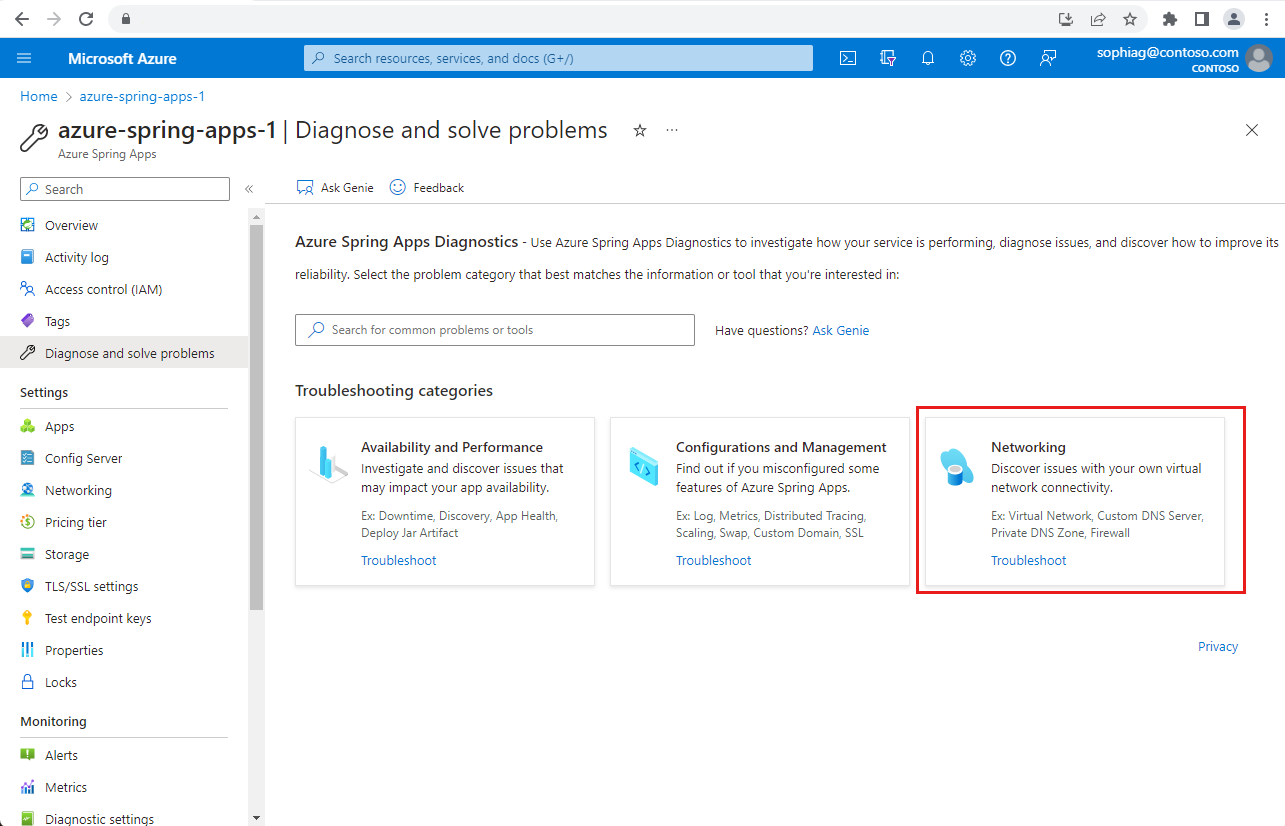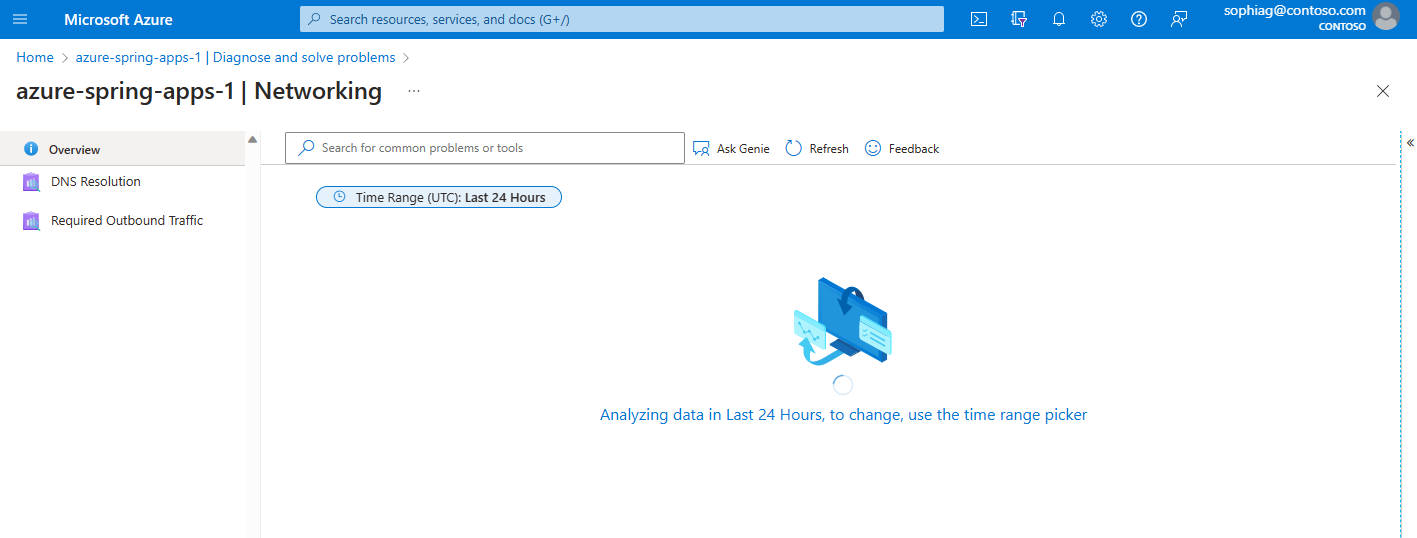Self-diagnose running Azure Spring Apps in virtual networks
Note
Azure Spring Apps is the new name for the Azure Spring Cloud service. Although the service has a new name, you'll see the old name in some places for a while as we work to update assets such as screenshots, videos, and diagrams.
This article applies to: ✔️ Basic/Standard ✔️ Enterprise
This article shows you how to use Azure Spring Apps diagnostics to diagnose and solve problems in Azure Spring Apps running in virtual networks.
Azure Spring Apps diagnostics supports interactive troubleshooting applications running in virtual networks without configuration. Azure Spring Apps diagnostics identifies problems and guides you to information that helps troubleshoot issues and resolve them.
Navigate to the diagnostics page
Use the following steps to start diagnostics for networked applications.
Sign in to the Azure portal.
Go to your Azure Spring Apps instance.
Select Diagnose and solve problems in the navigation pane.
Select Networking.
View a diagnostic report
After you select the Networking category, you can view two issues related to networking specific to your virtual-network injected Azure Spring Apps instances: DNS Resolution and Required Outbound Traffic.
Select your target issue to view the diagnostic report. A summary of diagnostics displays, such as:
- Resource has been removed.
- Resource isn't deployed in your own virtual network.
Some results contain related documentation. Different subnets display the results separately.
DNS resolution
If you select DNS Resolution, results indicate whether there are DNS issues with applications. Examples of healthy applications are shown the following examples:
- DNS issues resolved with no issues in subnet 'subnet01'.
- DNS issues resolved with no issues in subnet 'subnet02'.
The following diagnostic report example indicates that the health of the application is unknown. The reporting time frame doesn't include the time when the health status was reported. Assume that the context end time is 2021-03-03T04:20:00Z. The latest TIMESTAMP in the DNS Resolution Table Renderings is 2021-03-03T03:39:00Z, the previous day. The health check log may not have been sent out because of a blocked network.
The unknown health status results contain related documentation. You can select the left angle bracket to see the drop-down display.
If you misconfigured your Private DNS Zone record set, a critical result appears such as: Failed to resolve the Private DNS in subnet xxx.
In DNS Resolution Table Renderings, detailed message information displays from which you can check your configurations.
If your VNET uses a custom DNS server instead of the default Azure-provided DNS server, configure your DNS server to forward unresolved DNS queries to 168.63.129.16. Azure recursive resolvers uses this IP address to resolve requests. If you don't use the Azure recursive resolvers, the Azure Spring Apps environment won't function as expected. For more information, see the Name resolution that uses your own DNS server section of Name resolution for resources in Azure virtual networks
Required Outbound Traffic
If you select Required Outbound Traffic, results indicate whether there are outbound traffic issues with applications. The following examples are results for healthy applications:
- *Required outbound traffic resolved with no issues in subnet 'subnet01'.
- *Required outbound traffic resolved with no issues in subnet 'subnet02'.
If any subnet is blocked because of NSG or firewall rules, and if you haven't blocked the log, endpoint check failures display in the summary for the issue. The following destination endpoints fail because no rule is matched:
http://clr3.gigicert.comhttp://mscrl.microsoft.comhttp://crl.microsoft.com
You can check whether you overlooked any customer responsibilities. For more information, see Customer responsibilities for running Azure Spring Apps in a virtual network.
If there's no data displayed for Required Outbound Traffic Table Renderings within 30 minutes, the result is health status unknown.
Your network may be blocked or the log service is down.
Next steps
Feedback
Coming soon: Throughout 2024 we will be phasing out GitHub Issues as the feedback mechanism for content and replacing it with a new feedback system. For more information see: https://aka.ms/ContentUserFeedback.
Submit and view feedback for


